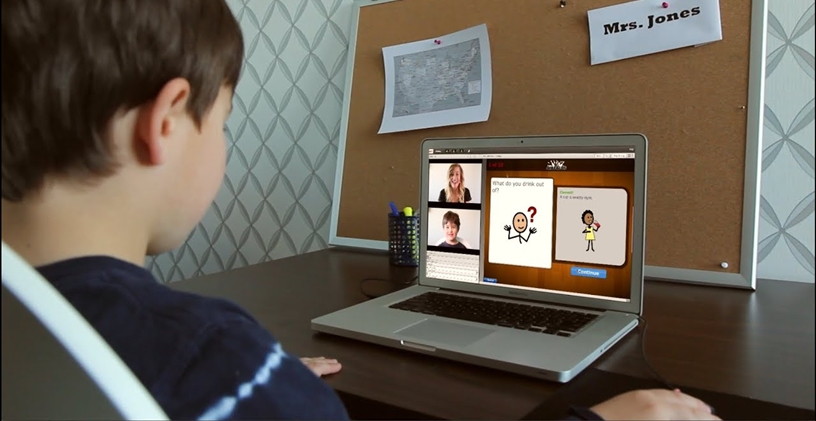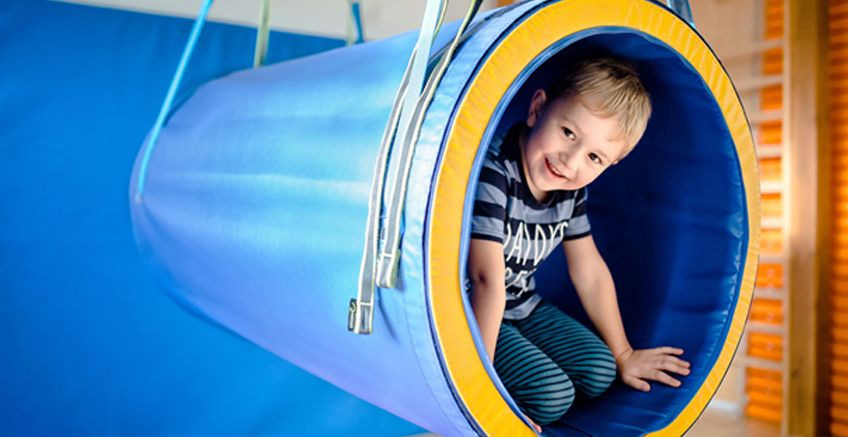What is Functional Communication?

Functional communication refers to the most basic of communication skills. This type of communication gets one’s basic wants and needs known, such as “I want that”, “I am hurt”, or “I need to use the bathroom”. These are not complex thoughts and they are often the first types of messages that children begin to communicate.
For most children, functional communication begins to emerge in the first year of life with gestures and is expanded on in the following years with words and later, simple sentences. However, for children with speech and language delays, this may happen much later. Children with significant language impairments may still be working on obtaining functional communication when they are much older.
Who Needs to Work on Functional Communication?
Any child who struggles to get his basic wants and needs met by communicating those needs to others would benefit from working on functional communication. This may be a child who is non-verbal (or who doesn’t speak yet) or who simply does not have enough words to get their message across. Sometimes, a child may have such poor speech production that they are trying to speak but cannot be understood. These children also need to be taught to use a functional communication system of some kind to reduce frustration and provide them an alternative means of communicating.
How Do You Work on Functional Communication?
Functional communication is best addressed by a speech-language pathologist. If your child is struggling to communicate his basic wants and needs, you should seek out a certified speech-language pathologist for assistance. However, the following presents an overview of what a speech-language pathologist may do for a child with functional communication needs:
Step One: Find an Appropriate Means of Communication
“Means of communication” refers to what a child uses to communicate. Most adults in the world use a combination of spoken speech, gestures, and body language to communicate to one another. That is our means of communication. A child with a significant speech or language delay may have trouble with the spoken speech part of that. In this case, other means of communicating must be considered as appropriate alternatives.
The primary focus at this point is to give them SOME means of communication, regardless of what that is. It should be easy for the child to learn and use and easy for the adults around the child to understand. The key is to start somewhere and then we can work on refining the child’s communication to more sophisticated systems later.
Here is a list of different means of communication that may be appropriate for a child who is working on functional communication. These are arranged in a somewhat hierarchical order, meaning that the easiest methods are at the top and more sophisticated methods are at the bottom. A speech-language pathologist will be able to determine which is the most appropriate method for each child:
- Gestures and Body Language: The child can use gestures and body language to communicate what he wants and how he is feeling. The child may point to or reach for desired objects or lead an adult to what he wants. He may communicate his displeasure with something by frowning or slumping and may communicate joy through smiles and laughter. This is the most basic form of communication and it should most definitely be acknowledged for this children so they don’t feel like they are trapped with no means of communicating. You can say things like “Your body is telling me that you are mad. I’m so sorry that you can’t….”
- Sign Language: Children who are unable to speak can often use simple signs to communicate their basic wants and needs. These will need to be taught to the child and the adults that will be communicating with that child.
- Picture Exchange Communication System (PECS): This is another alternative means of communication that allows a child to communicate using pictures of what he wants.
- Communication Board: A communication board is a simple alternative/augmentative communication (AAC) device where pictures of things the child may want to communicate are placed on a board and the child is asked to point to the picture of what he wants.
- Voice-Output Device: There are many devices out there (and now apps) that will help a child communicate by speaking a message when they push a button. These types of devices can store many different words and messages so they offer a greater variety of options for the child. These devices may take longer for a child to learn but they can grow to meet the child’s linguistic needs as he or she gets older.
Step Two: Choose New Words to Teach
Once you have chosen an appropriate means of communication for a child, you will then want to teach him or her to use that means to communicate.
If the child is not communicating much yet, you will want to start by teaching just one or two concepts. Choose things that are highly motivating to the child, such as a favorite food or toy, or a social interaction that the child really enjoys, such as tickling, bouncing, or swinging.
Step Three: Model the New Words
Now that you have chosen a word, you will want to model it for him or her as much as possible. No, that doesn’t mean you need to dress up like Vanna White and display the word on a light-up board. Though if you want it, I’d definitely like to see a picture!
Instead, I’d like for you to say the word for the child over and over again. Use the word in a variety of different contexts, such as during different activities or times of the day. Say the word by itself many times and then in two-word combinations as well to show how it can be used.
While you are saying the word, you should also be demonstrating the way that you are expecting the child to use the word. For example, if you want the child to sign the word, then you should sign and say the word at the same time. Or, if you have a voice-output device for the child to use, you should say the word while you push the button on the talker.
You should say and model the word MANY, MANY times for the child before you ever expect him to say/sign/push it. Children need to hear things many times to learn them and children with language delays take even longer. Be patient!
Step Four: Provide Temptations to Say the Word
Now that your child has been exposed to the word over and over again, you should start setting up temptations that will encourage the child to use the word. For example, put that item high up on a shelf so that they child can see it but not reach it.
When the child reaches or points for it, look confused and say “what? What do you want?”. Give the child wait time to see if he will say/sign/push it by himself. Try counting to 10 in your head so you know you’ve waited long enough.
After you’ve given some wait time, model the word for the child as a question. Ask “do you want the ball? Ball?”. Make sure you use the means of communication that you want the child to use while you say it, such as signing or pointing to the picture. Then, count to 10 in your head again. Wait time is key.
If the child still doesn’t say/sign/push/point to the word, go ahead and model the word for the child again and then give it to him. You don’t want to frustrate him too much and you want to acknowledge that the child communicated by pointing or gesturing for what he wanted.
Step Five: Be Patient
These are the basic steps. You simply need to keep doing this until the child is able to use that method of communication. If you’ve done this for a while on a certain word with no luck, try a different word and come back to this one. Just keep trying, eventually, he may be ready to communicate to you.
References
This article was written by the Speech and Language Kids website. You can find the original version here.







